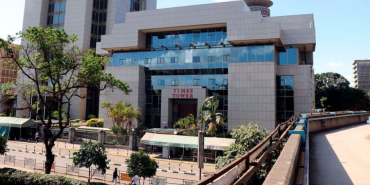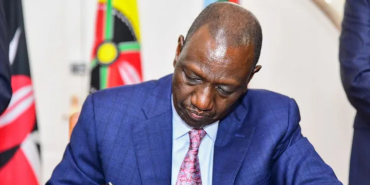Cooking Gas Prices in Nairobi Remain High Despite Tax Cuts

Multinational oil companies operating in Kenya are under increasing scrutiny for allegedly maintaining high retail prices of liquefied petroleum gas (LPG), despite significant drops in wholesale costs and tax exemptions introduced by the government to promote cleaner cooking fuel adoption.
While these firms reap substantial profits, Kenyan consumers are failing to benefit from the intended cost reductions, raising concerns about market fairness and the effectiveness of current regulatory frameworks. The situation is particularly pressing as the government aims to encourage wider LPG use as an alternative to more polluting fuels like charcoal and kerosene. Several initiatives, including the elimination of key taxes such as the 8% value-added tax (VAT), 2% railway development levy, and 3.5% import declaration fees, were designed to make LPG more affordable for households.
However, these efforts appear to have been undermined by the pricing practices of major oil marketing companies (OMCs). Industry data reveals a stark disparity between wholesale costs and retail prices. In March, for example, Rubis Kenya purchased LPG at the Mombasa Terminal for $775 per tonne, equivalent to approximately Sh1,300 per 13-kilogramme refill. Yet, the company sells the same quantity of cooking gas to consumers for Sh3,140, marking a staggering markup of 156%. Similar patterns are evident among other leading OMCs like TotalEnergies and Vivo Africa (Afrigas), which also charge consumers around Sh3,190 per 13-kilogramme refill.
This pricing behaviour has sparked criticism from industry insiders and market observers, who point out that the savings from lower wholesale costs and tax waivers have not been passed on to consumers. Instead, these companies appear to be capitalising on favourable market conditions to maximise their profits, effectively negating the government's efforts to make clean cooking fuel more accessible.
The discrepancy in pricing has been attributed to what economists refer to as the "rocket and feather effect," where prices rise quickly but fall slowly. In April, the landing price of butane, a key component of LPG, decreased from Sh135 per kilogramme to Sh99 following the removal of VAT. This reduction should have translated to a retail price decrease of approximately 26.7%, bringing the cost of a 13-kilogramme refill down to around Sh2,500. However, consumers continue to pay Sh3,190, even higher than the pre-tax exemption rate in June of the previous year.
The government is now contemplating various interventions to address the situation, including the potential imposition of price controls on LPG, similar to the system used for petrol, diesel, and kerosene. This approach, however, has generated debate among economists, with some arguing that price caps would ensure fairness for consumers, while others advocate for a more competitive market structure that allows independent players greater access.
“The government’s efforts to reduce LPG costs, including tax removal and proposed cylinder subsidies, are being frustrated by multinational OMCs, who keep retail prices artificially high,” said a source familiar with the issue. Policymakers are concerned that unless the industry becomes more competitive, household LPG costs may remain elevated despite regulatory interventions.
Multinational companies often justify their pricing strategies by citing operational costs, such as cylinder maintenance and distribution expenses. Energy and Petroleum Regulatory Authority (EPRA) Director General Daniel Kiptoo has previously noted that multinationals operate on a larger scale and incur higher expenses, factors reflected in their pricing models.
However, independent dealers refute these claims, arguing that smaller firms have successfully reduced retail costs without compromising service quality. Kepher Odongo, Secretary-General of the Energy Dealers Association, contends that OMCs have no new operational costs warranting the sustained high prices.
“Transport costs have dropped as fuel prices decline, so why haven't the big dealers lowered LPG prices?” he questioned.
Small traders offer significantly lower rates, charging Sh2,500 for a 13-kilogramme cylinder and Sh1,350 for a six-kilogramme refill, a stark contrast to the figures quoted by multinational firms. The widening price gap between independent dealers and multinational firms raises concerns about pricing fairness and market dominance. While OMCs control a significant share of the sector, the existence of smaller dealers offering lower rates suggests that overhead costs alone do not justify the high markup.
Adding to the complexity of the issue, international LPG prices have steadily declined over the past year. In May, wholesale rates at the Mombasa Terminal saw an additional Sh2 per kilogramme drop, yet OMCs continue to sell LPG at inflated retail prices. The persistent cost disparity comes at a time when the government has been actively pushing for the adoption of clean cooking energy. A Sh3.1 billion initiative was recently launched to distribute LPG cylinders to 6,000 boarding schools, expanding market opportunities for suppliers.
However, this increased demand raises concerns that OMCs could further exploit the situation by maintaining high retail prices despite lower procurement costs. In response to growing public frustration, some stakeholders have called for a regulatory overhaul to introduce price transparency and encourage fair competition. One potential solution involves allowing more independent suppliers to enter the market, reducing OMC dominance and forcing price corrections.
Energy sector insiders maintain that, unlike other petroleum products—petrol, diesel, and kerosene—LPG prices remain unregulated, allowing multinational firms to set prices as they wish. Historically, LPG price hikes have coincided with global crude oil volatility, such as the spike observed three years ago when VAT was reinstated at 16%. However, since last year, global LPG prices have dropped, the Kenyan shilling has strengthened, and taxes have been reduced. Despite these favourable factors, OMCs have refused to adjust their retail prices accordingly.








Add new comment